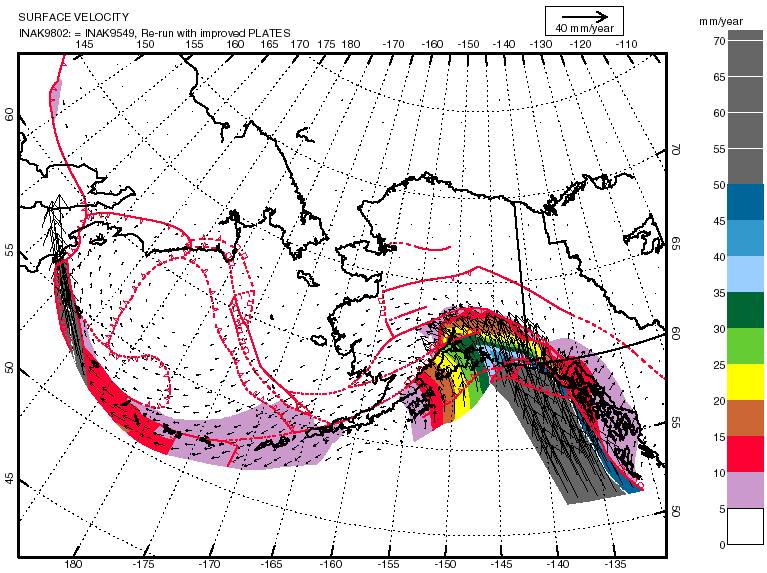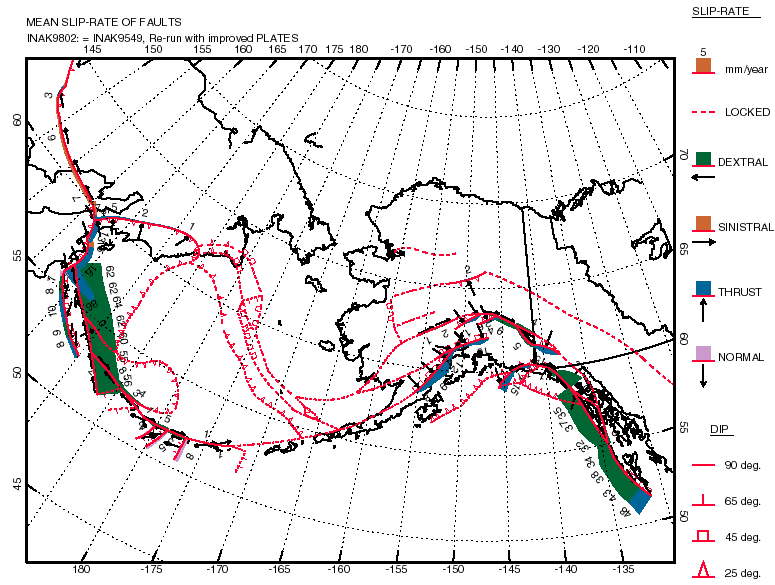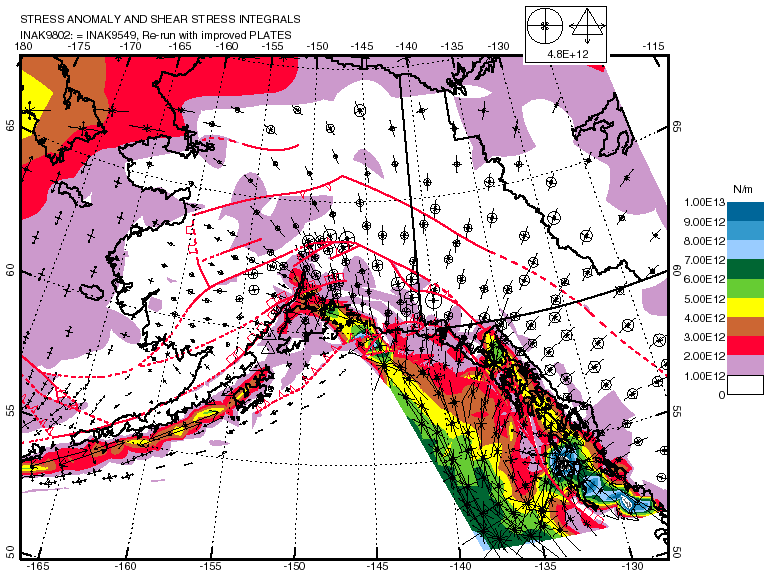
37. Bird, P. (1996) Computer simulations of Alaskan neotectonics, Tectonics, 15, 225-236.
Abstract. Ongoing deformation and fault slip (neotectonics) in the Alaska/Bering Sea region were modeled with thin-plate finite-element methods by computing anelastic strain rate, stress, and velocity fields which represent time averages over several seismic cycles. Models included variable crust and lithosphere thickness, heat flow, and elevation and incorporated all faults known or thought to be active. Three sets of experiments, totaling 46 models, were computed with systematic variations of shear traction on the megathrust, fault friction within North America, internal friction of lithospheric blocks, and mantle creep strength. Model quality was scored by comparing predictions to geologic data on fault slip rates, the most compressive horizontal principal stress directions, and geodimeter and very long baseline interferometry (VLBI) baseline rates. Best results were obtained with a driving traction of only 10~15 MPa on the Aleutian megathrust and fault friction of only 0.17 within North America; this is clearly a "low-stress" model. The fanning of the most-compressive stress axes away from the syntaxis was reproduced but does not imply high deviatoric stress magnitudes within the North American plate. The Aleutian forearc west of Kodiak Island moves westward along strike at rates which increase to 65 mm yr-1 in the Komandorsky region. However, no crust is presently escaping westward from the Alaskan syntaxis. Instead, it is shortened and stacked by thrusting, principally in the vicinity of the Chugach and Wrangell Mountains. Because stresses in this model are low and are delicately balanced against topography, it is likely that the present regime represents a transient response to Plio-Pleistocene glacial mass redistribution and differs from typical tectonic flow in the Tertiary.
P.S.
See Avé Lallemant and Oldow (August 2000 Geology) for geodetic confirmation of the rapid westward motion of the western Aleutian forearc! See Bunds (July 2001 Geol. Soc. Am. Bull.) for structural evidence that the Castle Mountain fault has low effective friction! Also, for more attractive graphical presentations of this model, see: R.W. Simpson (1997) Quantifying Anderson's fault types, J. Geophys. Res., 102(B8), 17,909-17,921. P. Bird 2000.10.11

